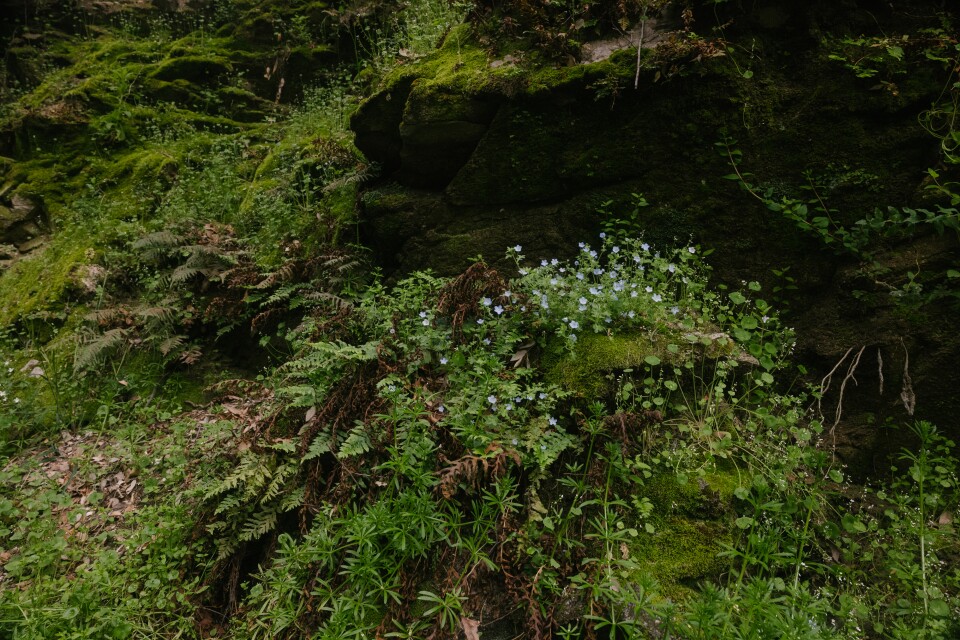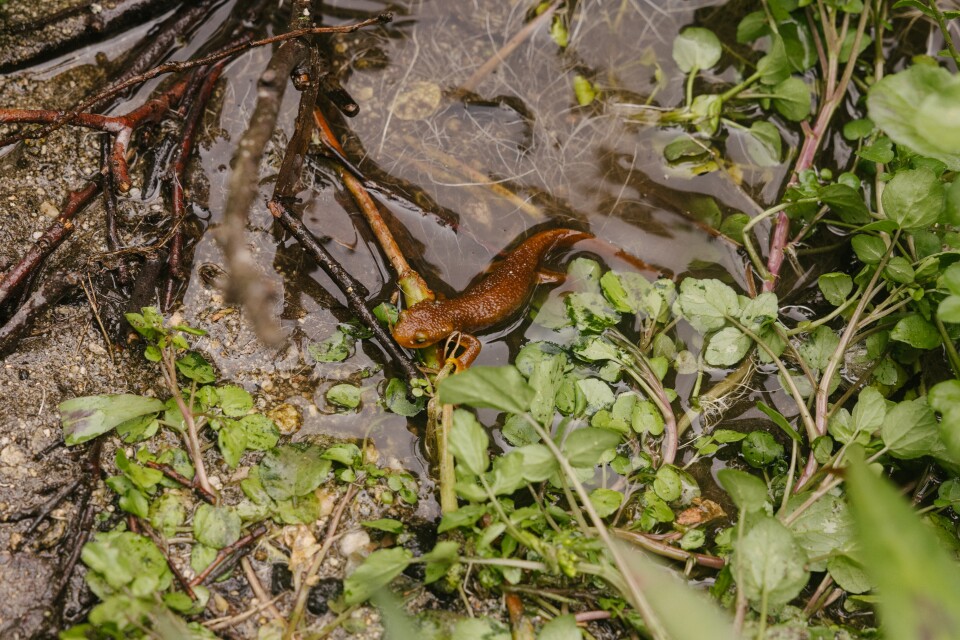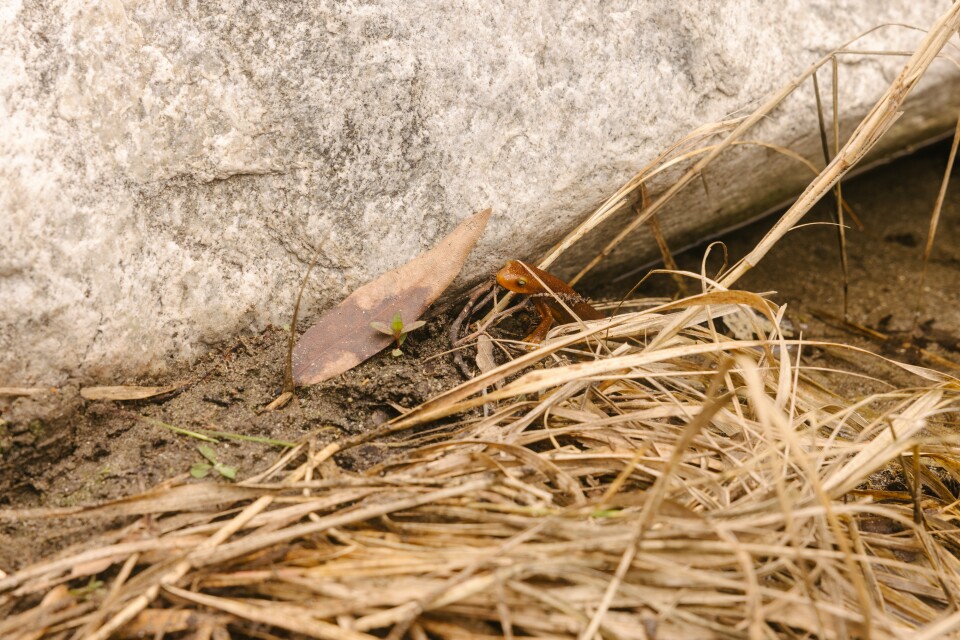Truth matters. Community matters. Your support makes both possible. LAist is one of the few places where news remains independent and free from political and corporate influence. Stand up for truth and for LAist. Make your tax-deductible donation now.
Yes, SoCal Newts Are Cute. Here's Why You Shouldn't Take Them Home

Watch where you’re walking on your next hike. It's newt season in Southern California.
California newts, also known as Coastal Range newts, are small semi-aquatic amphibians that belong to the salamander family.
A big portion of the Golden State is considered their natural habitat, from Mendocino County all the way down to San Diego County, but they’re a species of special concern in our neck of the woods.
Jennifer Pareti, an environmental scientist with the California Department of Fish and Wildlife, told LAist urbanization, wildfires, and vehicles have hurt the newts, but they can still be found all over our region — you just have to know where to look.
“It's the small things in nature that we often miss, and when you really start to look at the little things, you start to see so many parts of nature that we might miss every day,” she said.
Species of special concern
The state uses “species of special concern” as an alert for how officials track and manage our local wildlife, with the designation being given to a species or subspecies whose population has declined or range is being restricted in some way.
“It's a way for us to pay attention and start to try to look for any trends that we may see in population change, because if the population continues to decline, then it may end up becoming a species that needs to be listed as a threatened or endangered species,” Pareti said.
On a stream survey around Chantry Flat, which is currently closed for construction, Pareti led two other California Department of Fish and Wildlife representatives on an hours-long hike through Big Santa Anita Canyon.
They paused frequently around streams on the cloudy and slightly drizzly Tuesday, crouching around the water and on rocks, searching for ripples and glimpses of what lies beneath.
Cara Munro and Zoie Jones happily got their shoes wet to test the pH balance and take pictures of various habitats, taking turns carrying a backpack full of supplies.
While newts in the northern part of the state have a more stable population, they’re not doing as well in Southern California.
The slow-moving dark brown amphibians, with their bright-orange undersides, spend their life in the water and on land, so they’re dependent on streams and rivers. But Pareti said those habitats are disappearing as urbanization expands and the lowland waterways become less and less accessible to wildlife.
Southern California has also seen a number of wildfires in the past decade, including the 2020 Bobcat Fire that burned in and around the Angeles National Forest, which poses even more problems for the newts.
The charred hillsides may erode with wet weather, which can fill up streams with sediment, making those habitats unusable for species that rely on it for reproduction.

California newts are about the length of your hand, 5 to 8 inches, so they take a while to get where they’re going — which makes cars an issue.
If a road happens to be between a stream and a nice lounge of leaves, like in the Santa Monica Mountains, they’re still going to walk right across. Pareti said vehicle strikes are one of the reasons the newt population is declining.

Seeing them for yourself in SoCal
California newts can be found in the Santa Monica Mountains, the Angeles National Forest, Orange County streams, and the Arroyo Seco, just to name a few.
Here are some tips for newt spotting.
Step 1: Find a stream
The newts do hang out under leaves or in grassy areas for part of the year, but around March and April they start moving into SoCal’s waters to breed.
“They want a pool habitat that isn't too fast, what we refer to as something quiet, because they're going to lay their eggs in that water,” Pareti said.
The eggs will be swept away if the stream is too powerful, so they like to sit in calm waters or around rocks that’ll protect them from the raging flow going past.
Step 2: Wait patiently
Once you come across a stream or pond that doesn’t dry out, stand on the banks and keep your eyes peeled around the water.
The newts’ dark brown backs make excellent camouflage among the decaying leaves and debris, but their traffic cone-colored bellies are a dead giveaway.
“You would wonder, well, how are they not just easily picked off by predators,” Pareti said. “The interesting thing about California newts is that they produce a neurotoxin on their skin, and that usually repels most of the predators that would come after them.”

Step 3: Admire from a distance
While the newts themselves aren’t aggressive, their rough skin could pass along some of that toxin to you, which Pareti said could cause harm if you have a cut or end up rubbing your eyes.
So the best thing you can do is just let them be newts and watch them in the wild. But if you have to pick one up for its own safety, like gently removing it off a busy trail or road, just make sure you wash your hands.














